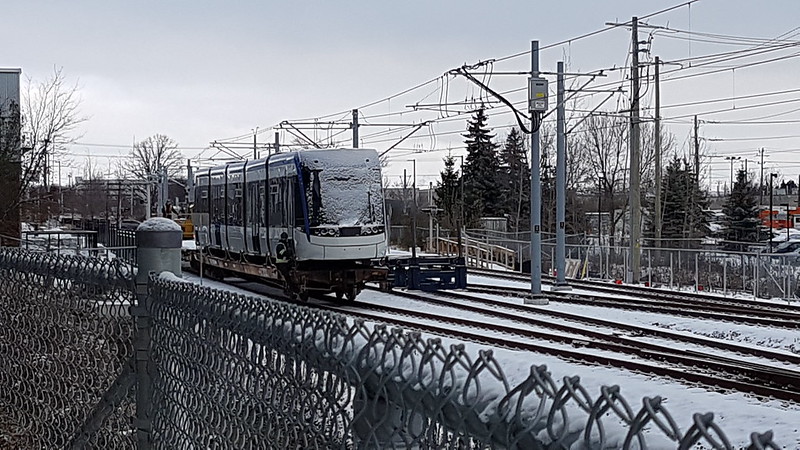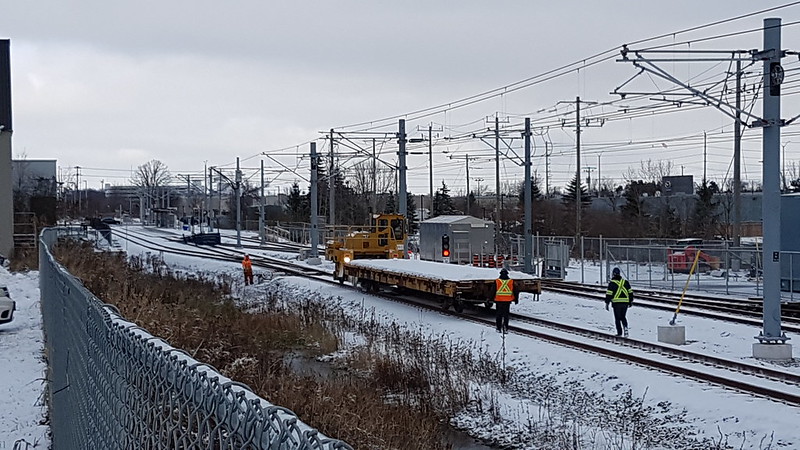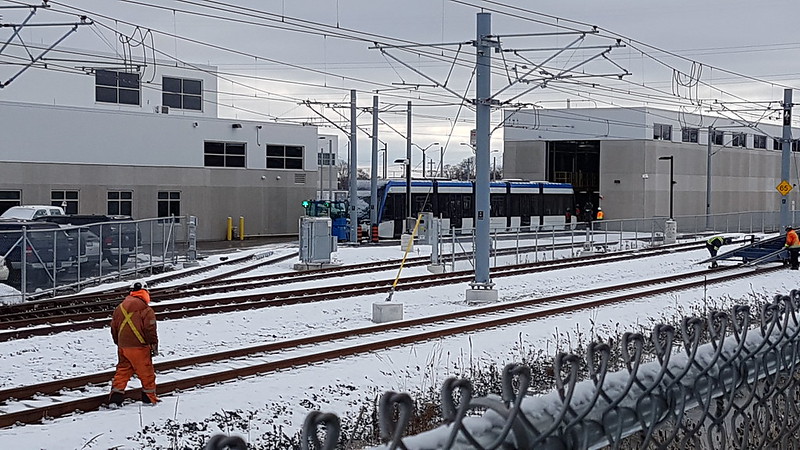KevinT
Active Member
In all of the testing that I've observed, in both the street right of ways and on the spur lines, they gong whenever they're about to start moving.
|
|
|
These Flexity "gongs" are digital recordings, not real bells.As far as the gongs go you should also bear in mind these ARE Toronto cars in everything but details (and at . Grandlinq bought them through Metrolinx' as an add-on to the Transit City order.
https://edinburghtrams.com/news/statement-on-the-use-of-tram-bellsPosted on Thursday, 3rd July 2014 at 13:01
Transport for Edinburgh has issued a statement following today's news coverage reporting that tram bells will be 'silenced' in certain areas of the city.
A spokesman for Transport for Edinburgh said:
There are no plans to stop use of the tram bell as it's a critical safety device on the road. Our policy hasn't changed since December last year when we started on-street testing. Drivers ring the bell when it's appropriate to sound it for very important safety reasons. This includes busy junctions, when pulling away from tram stops and when the driver thinks that a nearby pedestrian may not be aware of the presence of the tram.
The safety of pedestrians and our passengers is our number one priority and we train our drivers to use their judgement based on conditions around them.






Last Thursday Nov 15th, ION did its first winter night testing. I caught 509 out around 10:00 p.m. and as I headed home I heard on the radio that it was joined by 507 and 505. Reports are that the trio stayed out until 3:30 a.m. (this is why the anticipated last ever GEXR train up the Waterloo spur never happened). Here's a few shots...
Northbound, turning from Francis onto King:
Northbound, entering Waterloo Public Square:
Departing Waterloo Public Square:
Arriving at Conestoga Station:
Departing Conestoga Station:

Now if only they had something called "passengers"...They look good in the snow.
Now if only they had something called "passengers"...
Now if only Metrolinx hadn't gotten hot and heavy for Alstom and had finalized the spec for the Bombardier order on time instead of trying to cancel it, Waterloo Region could have had their vehicles and the Free Issue Equipment to install them according to the original schedule.

















I find it interesting that it notes that the Confederation Line is considered a federal transit project. Does that differ from being a federal railway/rail line? It doesn't seem like the Confederation Line is being required to operate under a certificate of fitness (i.e. as part of Capital Railway, aka the same setup as the Trillium Line). I wonder if this means that an LRT crossing a provincial boundary wouldn't be required to operate under a certificate of fitness since the regulatory business is just delegated to the municipality?This is interesting, as in Canada, we have at least two examples of LRTs having to meet federal regs, Ottawa's and K/W's.
In the US:
http://onlinepubs.trb.org/onlinepubs/circulars/ec058/08_01_Ames.pdf
A lot of readers will find the article interesting. I just tripped across it looking for "bells" and LRT + Federal regulation.
I also tripped across this for Ottawa, albeit I knew already that any and all transit in Ottawa is federally regulated, albeit divested to the municipal agency to oversee, but this specifically itemizes the LRT, although I have to wonder who oversees the ION's shared jurisdiction when using heavy rail lines?
https://documents.ottawa.ca/sites/default/files/lrtregfw_fnl_en.pdf
I haven't looked lately, but have tried many times in the past to find and access ION's legal basis, most specifically the signals and how provincial legal agreement/basis could also be used for the King Street Pilot in Toronto. (Assumed as an addendum to the Highway Traffic Act)
Any help on that most appreciated.
Addendum: Finding the right tags for successful searches is always hit and miss, and right now, it's miss on the above, but did find this:
https://rapidtransit.regionofwaterloo.ca/en/multimedialibrary/resources/2012_rt_tpadisplayboards.pdf
There must have been name-changes for the ION project...that's all I can find, let alone anything on regs...
510 completed the journey last night, delivered by the first CN train up the spur in 20 years from what I understand.
Yes, it's different, as different legislation pertains to each. One is under the NC Act, the other the Transportation Act.I find it interesting that it notes that the Confederation Line is considered a federal transit project. Does that differ from being a federal railway/rail line?
National Capital Region (Canada) - WikipediaDefined by the National Capital Act, the National Capital Region consists of an area of 4,715 km2 (1,820 sq mi) that straddles theOttawa River, which serves as the boundary between the provinces of Ontario and Quebec.
That's correct, and also why they have no track connection. If they did, by SCC previous rulings, the various railway acts would pertain.It doesn't seem like the Confederation Line is being required to operate under a certificate of fitness (i.e. as part of Capital Railway, aka the same setup as the Trillium Line)
From a cursory read, the NCA covers it, albeit, one wonders if it runs beyond the regional boundaries of that Act? Heavy rail crossing the Prince of Wales Bridge is of course, covered under the Transportation Act, as is the railway itself due to crossing provincial borders, let alone other factors.I wonder if this means that an LRT crossing a provincial boundary wouldn't be required to operate under a certificate of fitness since the regulatory business is just delegated to the municipality?




